The Classical World (88 page)
Read The Classical World Online
Authors: Robin Lane Fox

5. Bronze figurine of a Spartan girl, from the rim of a bronze vessel. Her robe, cut away off the shoulder, suggests she is dancing. Late
SIXTH
century
BC
.
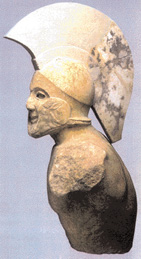
6. Marble statue of a god or hero, found on the Spartan acropolis. The sides of the helmet are decorated with male rams. Late fifth century
BC
.
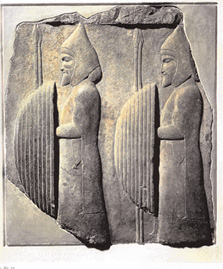
7. Footguards of the Persian king, with pointed hats of Scythian style. From Persepolis, fourth century
BC
.
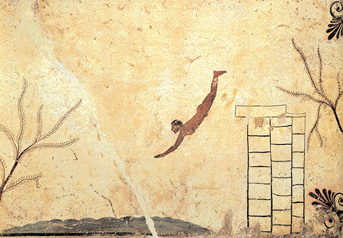
8. Painting on the inner surface of the coffin-lid of the ‘Tomb of the Diver’, found in 1968 about a mile south of Paestum. Four other paintings of scenes from a symposium decorated the inner sides: the young boy dives, holding his head awkwardly, from a plinth of uncertain significance. Like the symposium scenes, the scene surely refers to worldly life, perhaps to something in the dead man’s earlier life, rather than symbolizing his dive out into the ‘unknown’ space of the underworld, a favoured but fanciful interpretation. Painting on white stucco surface.
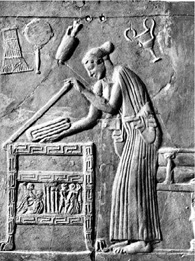
9. Small terracotta plaque from Locri, in the Greek West. A young woman handles a folded cloth at a decorated chest, beneath a mirror, a wool-basket, a flask and cup.
c
. 470–450
BC
.
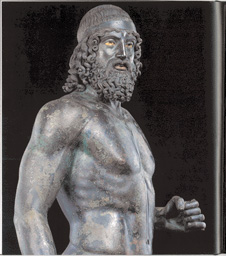
10. ‘Riace Bronze’ statue, Warrior A, evidently a hero, who held a shield. Fine classical work, arguably Athenian,
c
. 460
BC
. Shipwrecked, and thus preserved, off southern Italy.
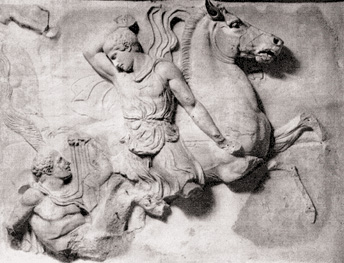
11. Marble relief of Athenian cavalryman, his gaze fixed on his fallen enemy. Possibly a reference to the first cavalry battle in the Peloponnesian War,
c
. 431–430
BC
. If so, Pericles’ Funeral Speech was spoken over the dead, including this warrior.
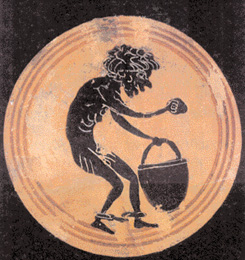
12. A rare Athenian representation of a slave, ugly, chained at the ankles and collecting stones. Attic black-figure,
c
. 490–480
BC
.
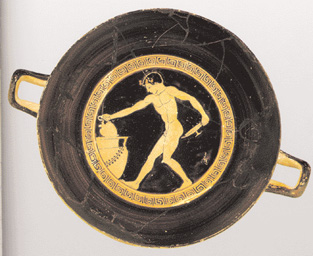
13. A wreathed young boy, perhaps not a slave, fills his party-cup, or
kylix
, with watered wine from the mixing-bowl. Attic red-figure cup, Cage painter
c
. 490
BC
.
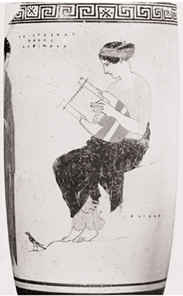
14. White-ground oil-flask, showing a female, playing as a Muse, captioned with the word ‘Helicon’, signifying the muses’ mountain. Achilles painter,
c
. 440–430
BC
.
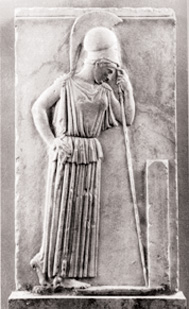
15. A pensive goddess Athena contemplates what is probably a grave monument; perhaps inscribed with names of Athenian casualties in war. Fine classical marble relief, Athens Acropolis,
c
. 460
BC
.
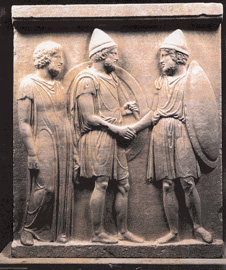
16. Gravestone of Sosias and Kephisodorus: two citizen-hoplites shake hands; a man in a priestly tunic at left. Athens,
c
. 410
BC
.
